We’d been to Rome before, but in the pre-#EUtour days, so we had to go back. And I’d dreamed of visiting Pompeii ever since my late Grandad brought me back a guidebook when I was little, so why not combine the two, with a bit of Sorrento, Capri and the Amalfi Coast for good measure. Trouble was, we only had 6 days…
At home, I can relax for England. Weekends without plans are my heaven. But on holiday, I don’t want to waste any precious time. So when I found cheap flights arriving in Rome on a Tuesday and leaving from Naples the following Monday I started planning how to pack as much in as possible. This is how it went down:
DAY 1 – Tuesday: We arrived at Rome Ciampino and got the bus to Termini. Dropped off bags at the hotel (Grand Hotel Palatino, chosen because it was walking distance to both Termini and the Colosseum, and right next to Cavour metro station). Walked to the Forum, waved our flags in front of the Colosseum, walked to the Spanish Steps, ate pizza, walked to the Trevi fountain (which is looking gorgeous after its Fendi-funded restoration), ate gelato. EU capital #16 done!
DAY 2 – Wednesday: We got the metro to Termini to catch the fast train to Naples. There are a few options for travelling between the two cities, from the slow trains which take 2 hours+ to the super fast trains which are run by the national rail service Trenitalia and by the private firm Italo. We chose an Italo train, partly because it was cheaper than the national Frecciarossa and partly because I’d once seen a documentary describing it as the “Ferrari train”. The process was really easy, I bought the tickets online, our seats were reserved and there was free wifi on the train. Getting from Rome to Naples took only 1hr 15min and I loved seeing the speed indicators in the carriage hit 300km/h.
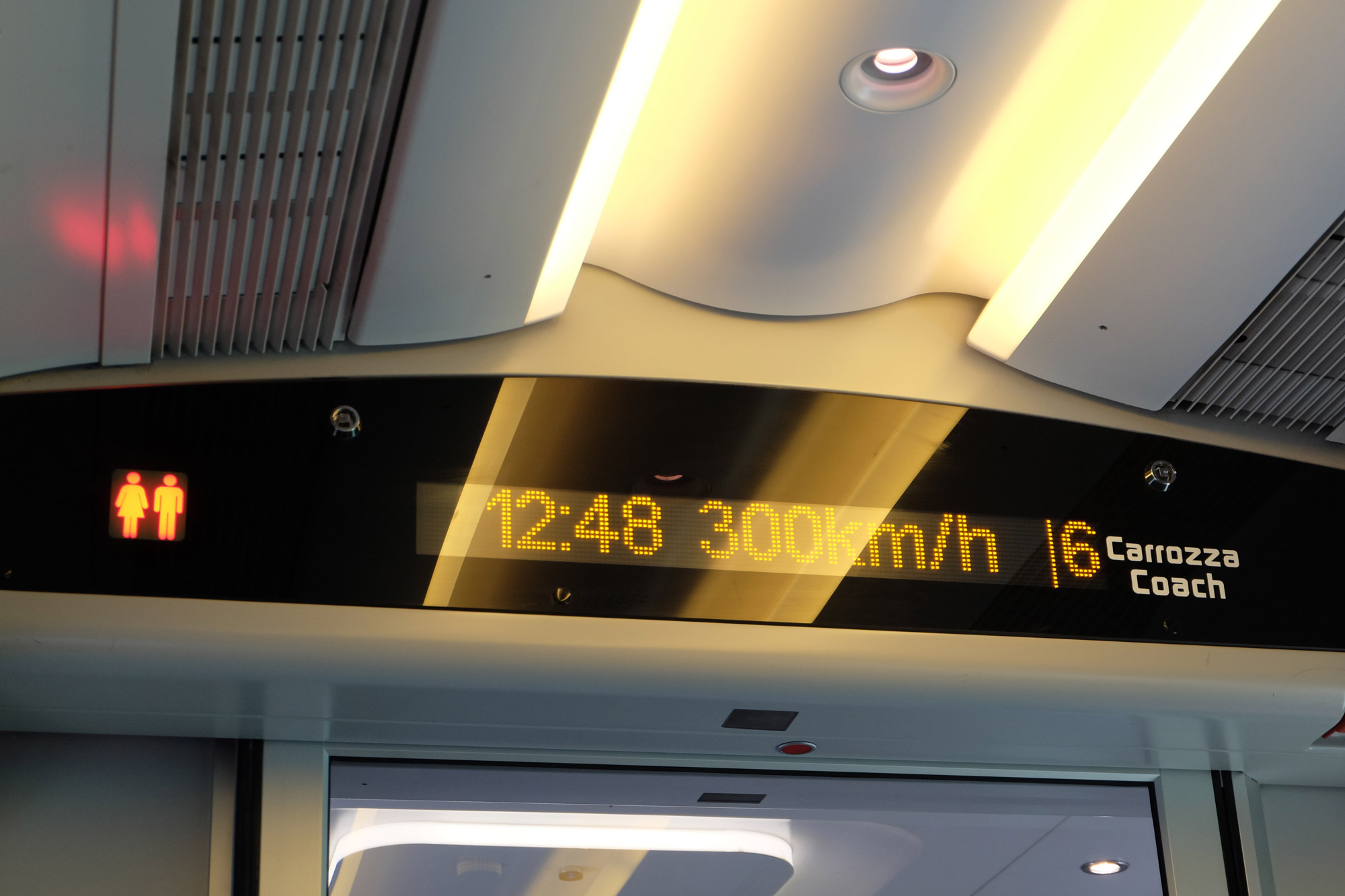
When we arrived in Naples we changed to the local train to Sorrento, the Circumvesuviana. Here’s a top tip. When you arrive in Naples, DO NOT board the train to Sorrento at the Piazza Garibaldi station underneath the main train station (unless it’s late at night). You won’t get a seat, there’s no air con, the pickpockets are legendary and the train takes forever to get to Sorrento. Not the best start to your trip. Instead, head out of the station, down the side of Piazza Garibaldi, turn to the left down Corso Guiseppe Garibaldi and board the train at Porta Nolana station. This is the terminus for the Circumvesuviana. It’s a bit scarier because there probably won’t be any tourists but you’ve got a much better chance of getting a seat and you get to feel smug when an entire train-load of tourists try to get on an already-full train at the next stop.
Sorrento is right at the end of the line and it feels that way – it’s well over an hour and a world away from gritty Naples. We were staying at the Grand Hotel Cesare Augusto and loved its location right near the main square, Piazza Tasso, and retro decor.
DAY 3 – Thursday: We got straight to it and hit Pompeii.
When I was little, my Dad’s dad and his wife seemed to always be away somewhere and would send us postcards back from their travels. I was obsessed with Greeks and Romans from the age of about six (maybe because we lived fairly near Hadrian’s Wall – always loved a ruin). On one of their trips they visited Pompeii and brought be back the best guidebook ever, full of pictures of what Pompeii was like before and after the eruption. I’ve wanted to visit ever since, and because my Grandad died when I was about eight, getting to Pompeii was a very special moment.
All the guidebooks say it’s huge and that the signage is dreadful and they’re right. We paid 15 Euro each for a 2 hour English language guide and got so much more out of our visit than we ever would have done if we’d tried to DIY with a map or even an audio tour.
Read more: 12 tips for visiting Pompeii
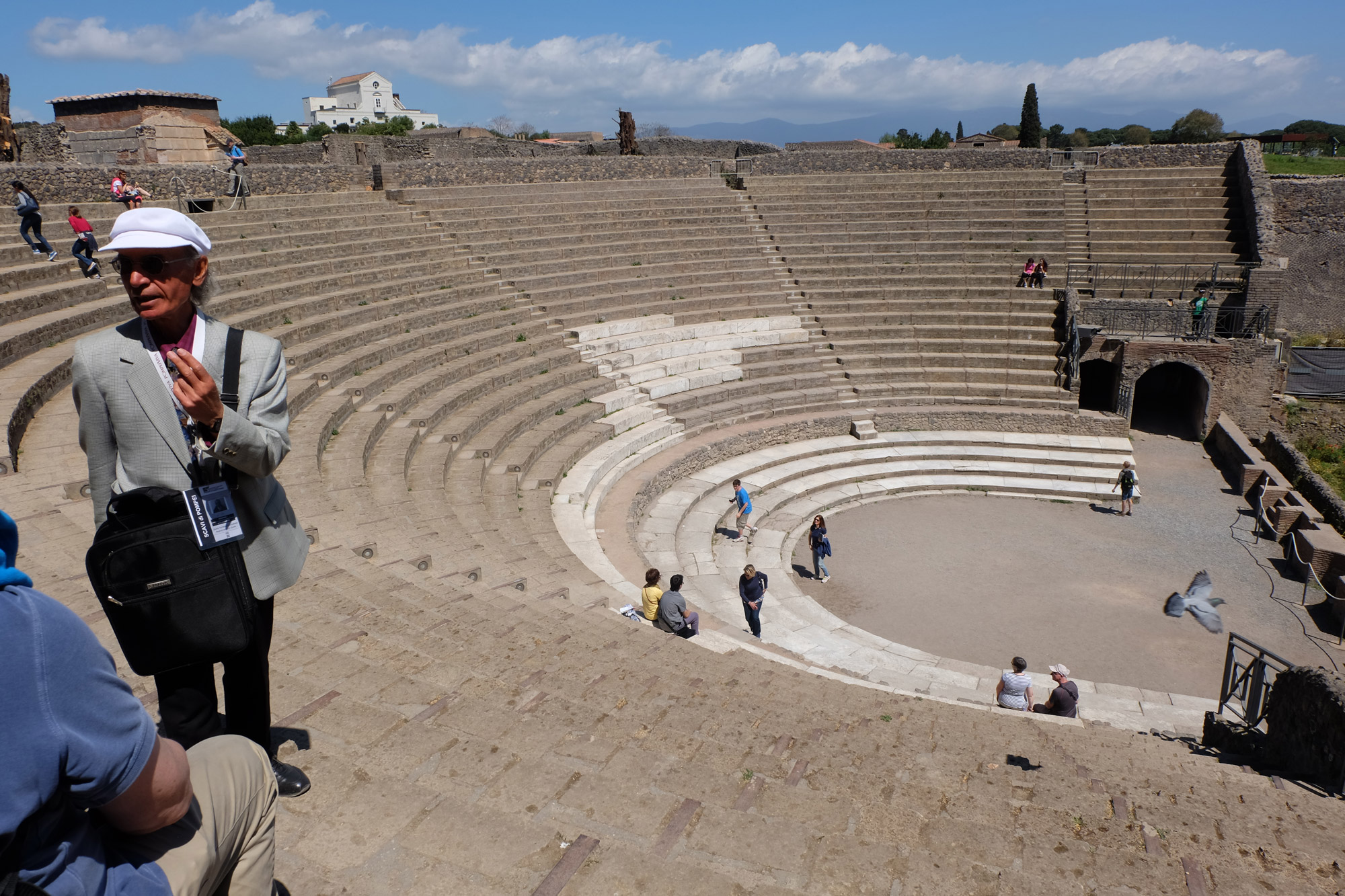
After the tour, we had some lunch in the on-site café and set back out just to see a few more of the highlights. Six hours later we realised the site was about to close and we should probably leave!
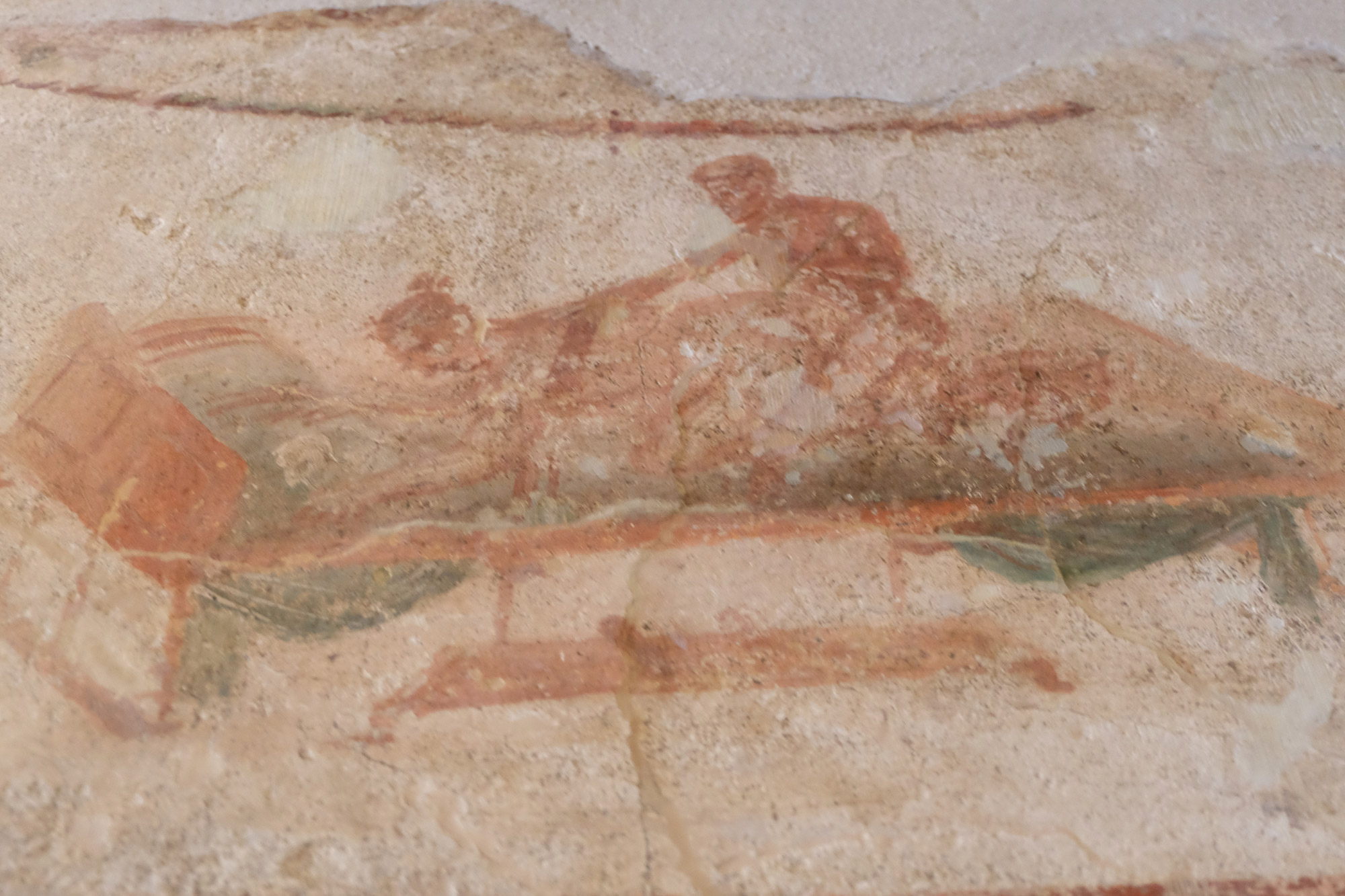
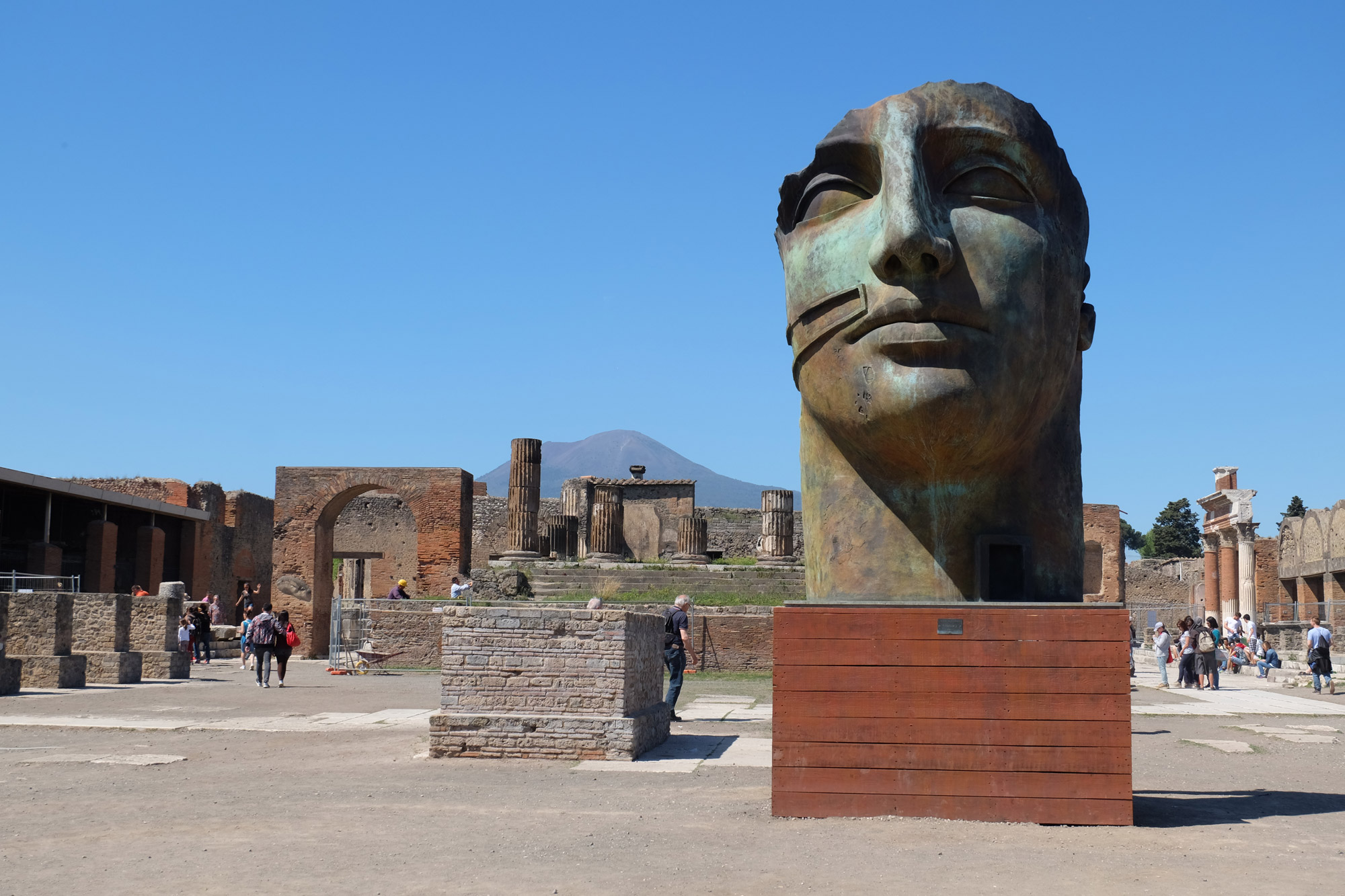
DAY 4 – Friday: A slightly more relaxing day. We got a hop on hop off bus from Sorrento along the Amalfi Coast, which wasn’t anything like as scary as I thought it might be and definitely not a patch on the bus on Capri. The scenery was incredible, particularly on the first part of the drive before reaching Positano. We carried on to Amalfi itself and had lunch overlooking the sea watching two young lovers wearing pizza boxes as hats on the beach.
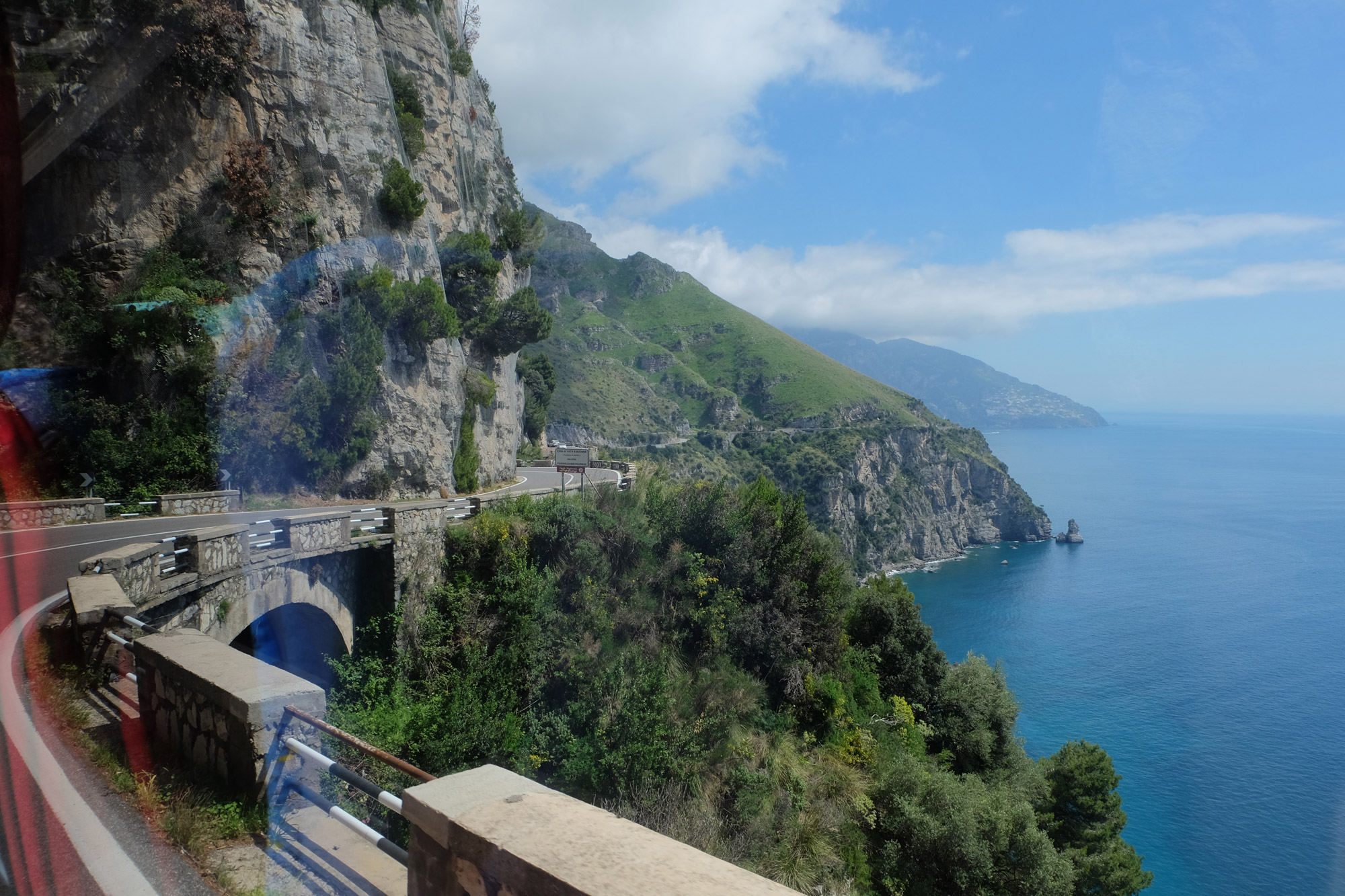
Amalfi is pretty on the sea front, but on rounding the corner into the main square your breath is taken away by the cathedral which rises up on steps like a literal stairway to heaven. A little further up there’s a fountain covered in plastic model people, animals and buildings – very odd but cool to see.
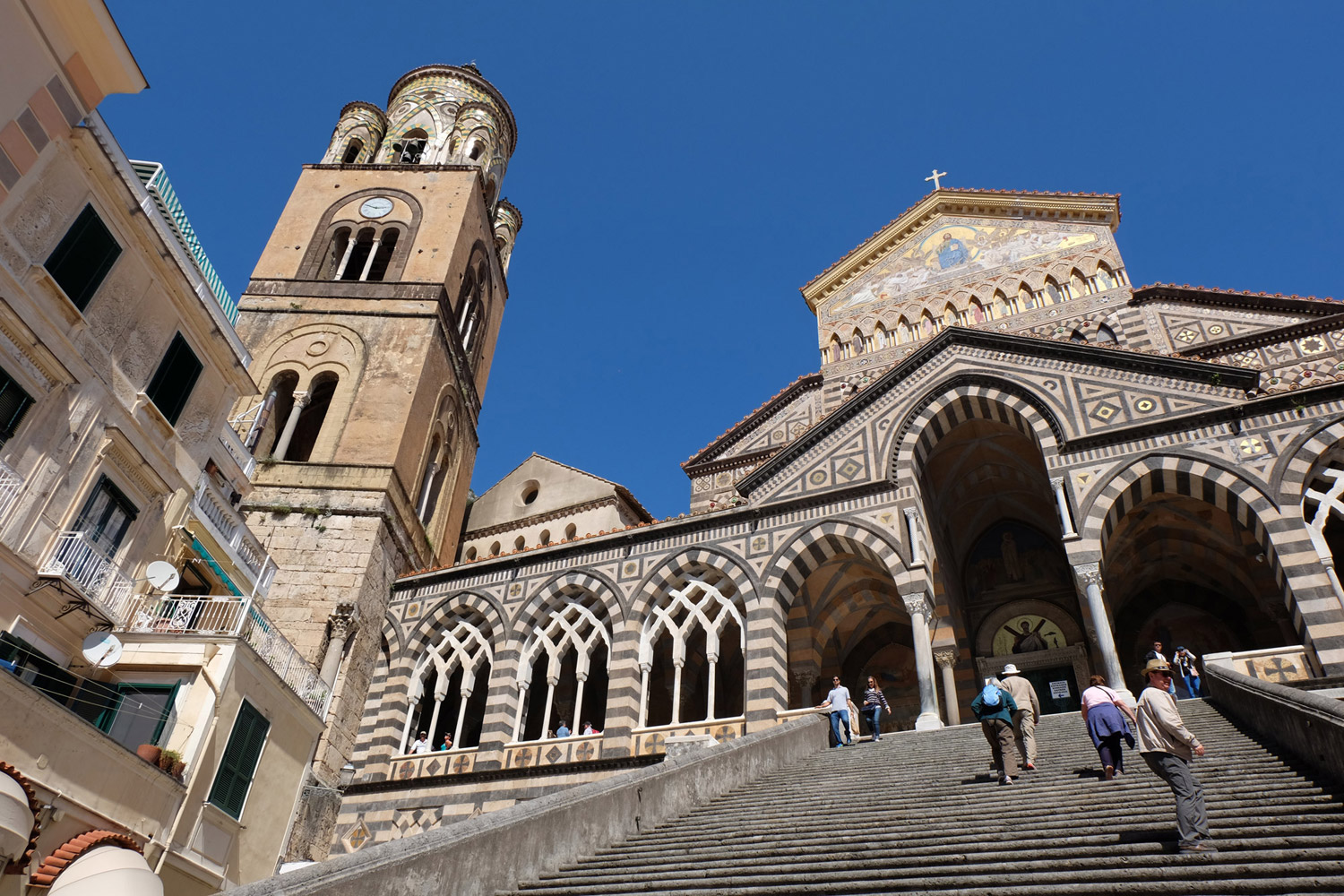
We traced our steps back to Positano, experiencing the Amalfi coast traffic problems with a few tight squeezes on particularly narrow stretches of road. At Positano we walked down the hill and through the town. Most of the lower part of the town has no road access at all and the buildings just tumble down towards the sea with tiny footpaths for streets.
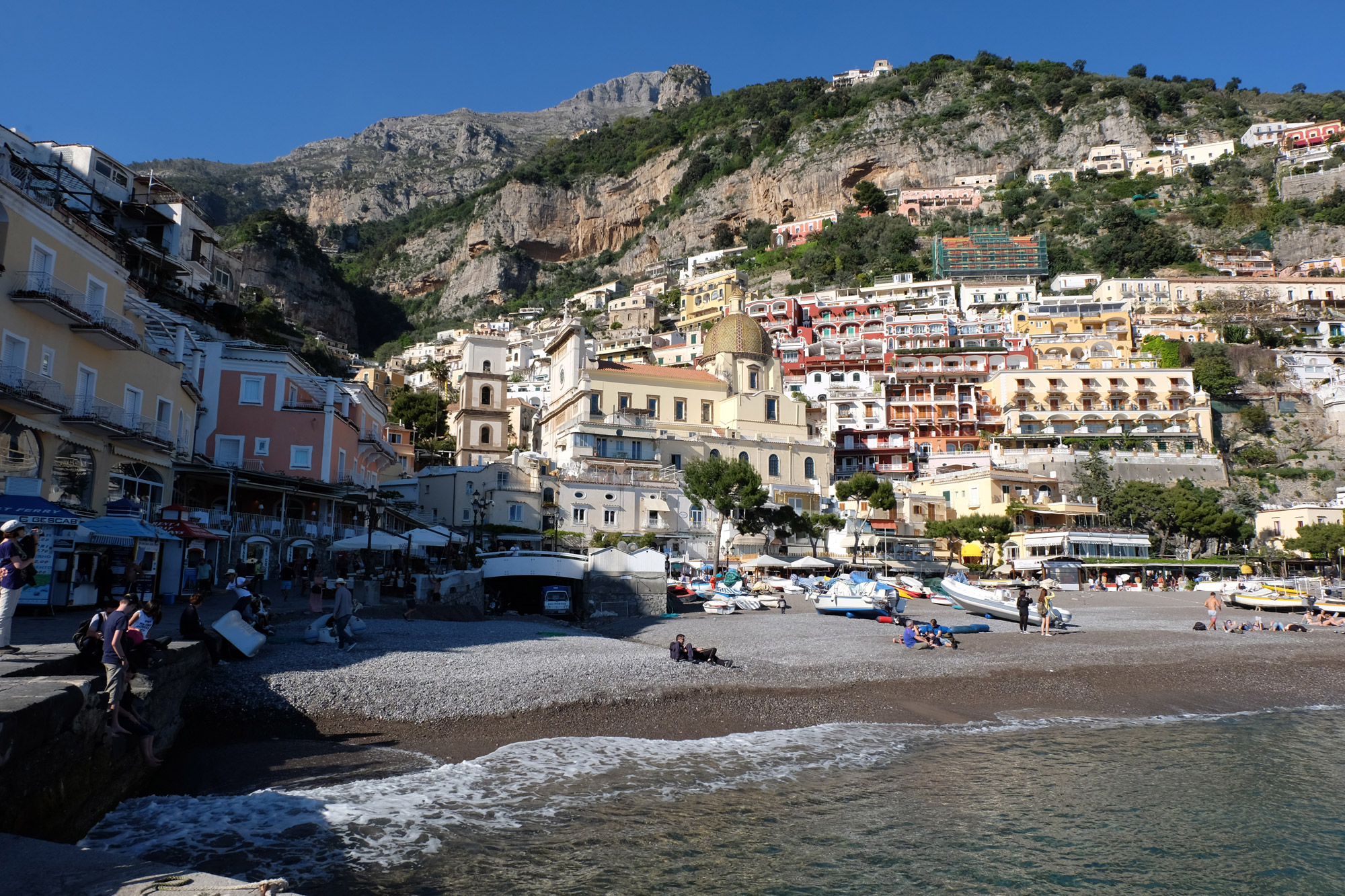
We’d wanted to see the Amalfi coast from the sea as well as from the road, so we took the boat back to Sorrento – well worth it for the views of the cliffs and the evening sun over the harbour in Sorrento.
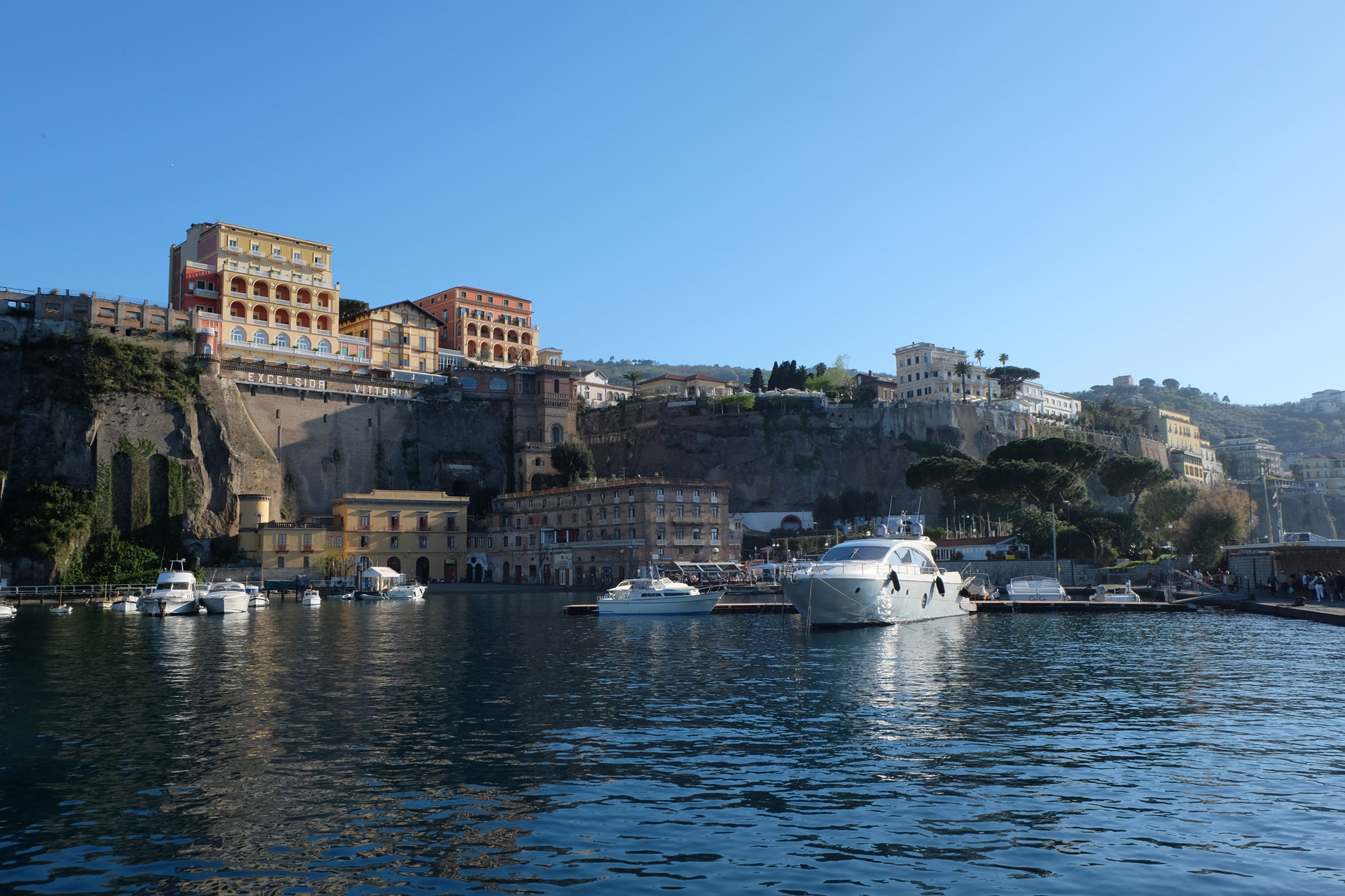
Day 5 – Saturday: More walking today. We took the Circumvesuviana train to Ercolano and caught a tour bus from just outside the station to a car park near the top of Vesuvius. The walk up the side of the volcano had been described online variously as “no big deal” and “strenuous” so I wasn’t sure what to expect – I’m not the fittest and found it pretty tough, especially as it’s dusty grit underfoot so you’re constantly slipping. It was worth it though.
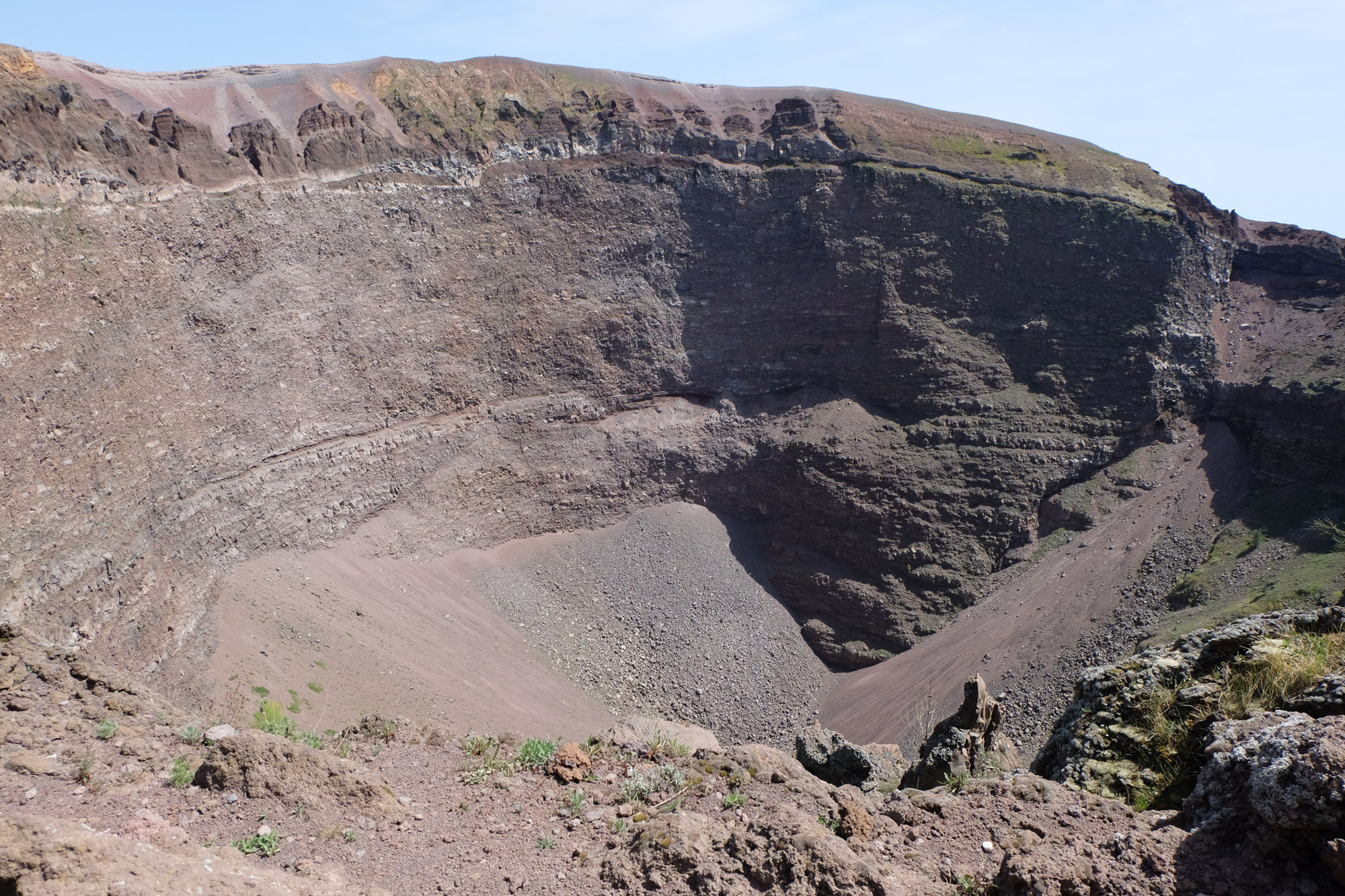
Before the eruption that buried Pompeii and Herculaneum, Vesuvius was far higher than it is now. It was amazing to look into its smoking crater and imagine the force of the eruption.
The bus dropped us off back at the station and it was an easy 10 minute walk to the ruins of Herculaneum. Because Herculaneum was buried by ash and mud rather than falling rocks, it’s much better preserved than Pompeii, although much smaller because it’s more difficult to excavate (much of Herculaneum is still probably buried deep under modern-day Ercolano). Herculaneum is also much quieter than Pompeii – there were only a couple of small school groups when we were there and very few other visitors. It’s also creepier – at the old beach and in the boat houses over 300 skeletons were found and many of them are still there. The casts at Pompeii are haunting but there’s something more immediate and shocking about seeing so many human skeletons, crushed together, hiding in vain.
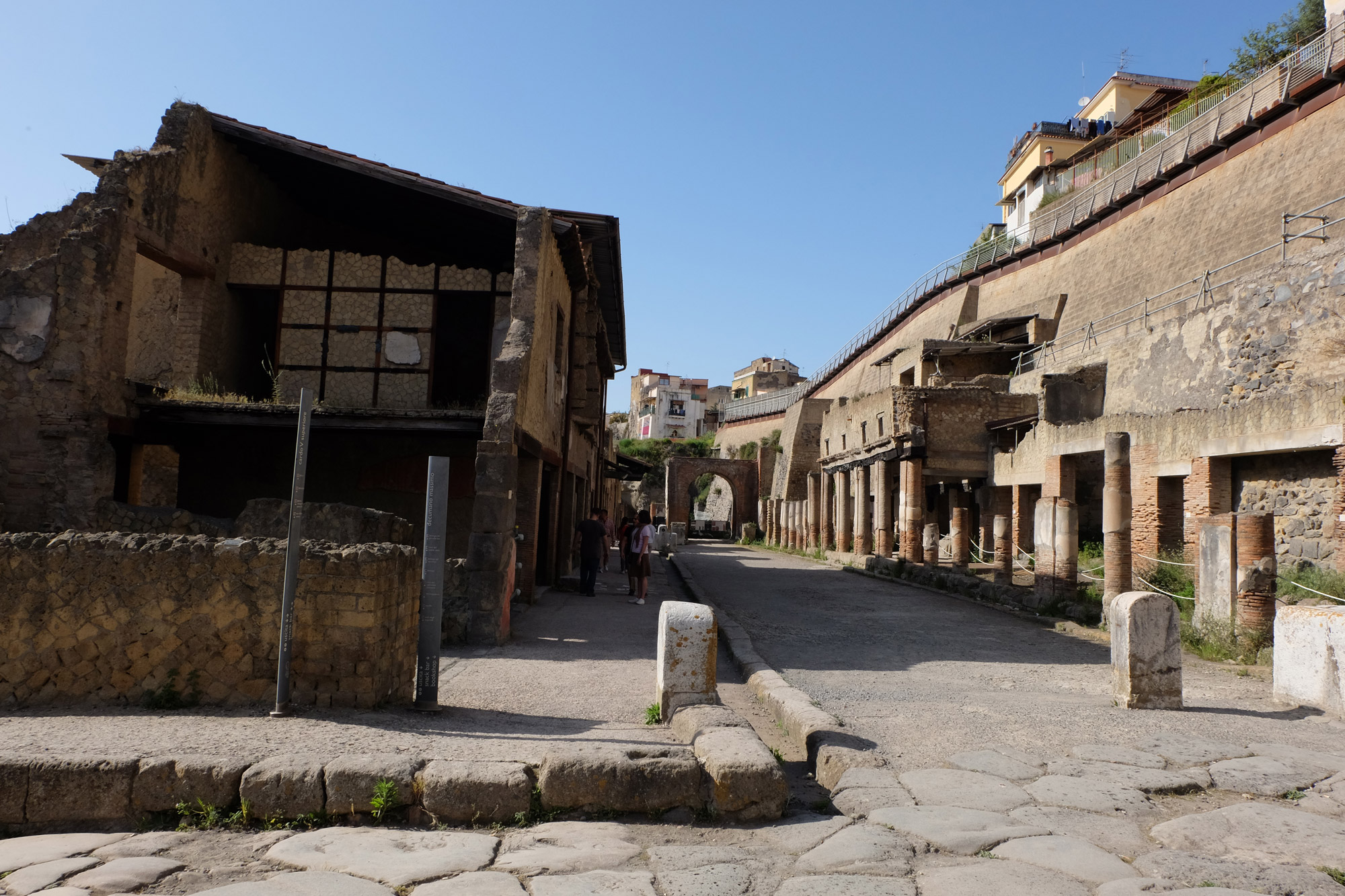
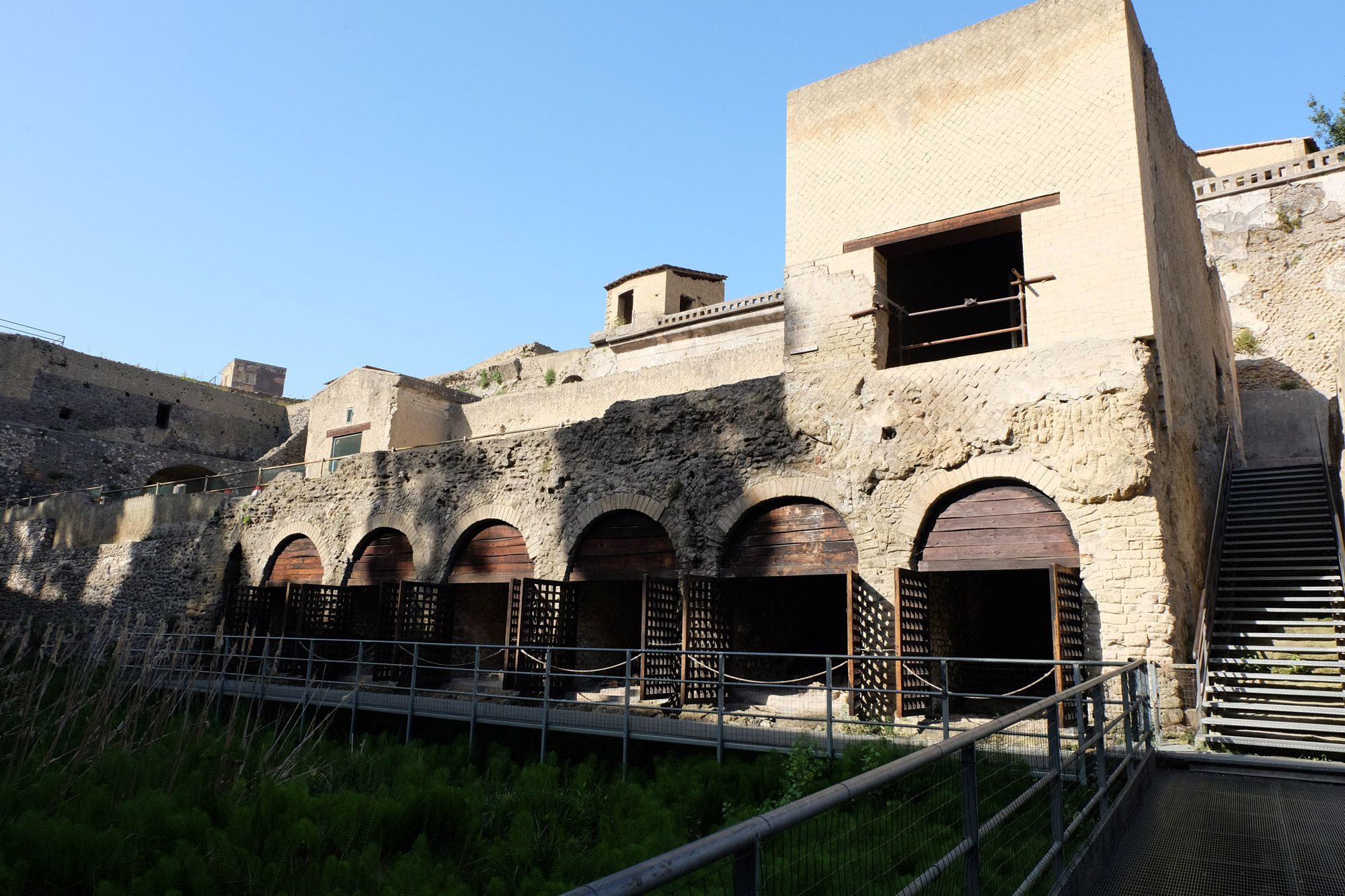
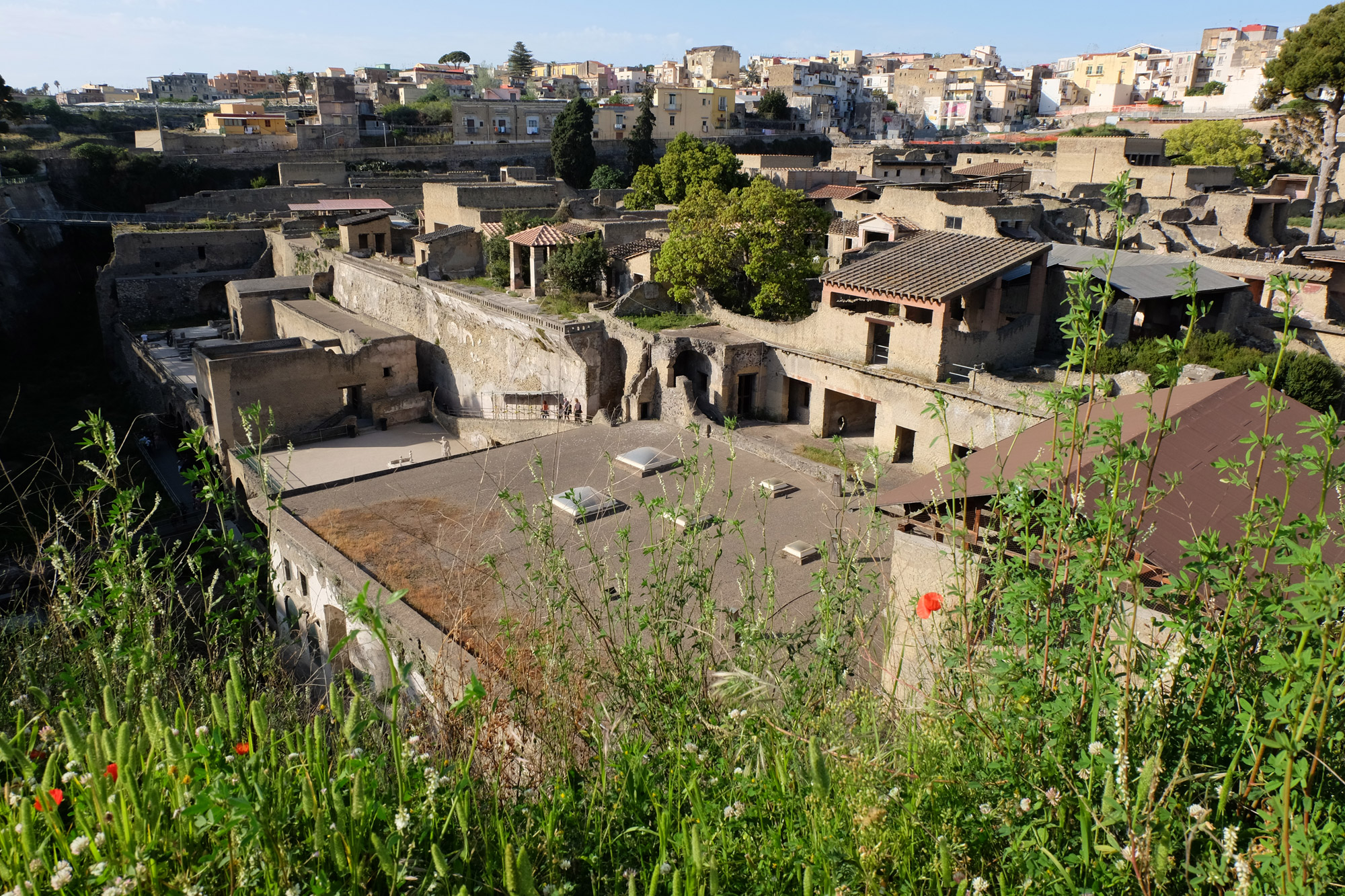
Day 6 – Sunday: On Sunday we took an exorbitantly-priced ferry to the beautiful isle of Capri. The first thing we saw on arriving was the Capri taxis – most of which are stretched and open top. Unfortunately we were on the bus…
The Amalfi coast bus has nothing on the bus from Marina Grande to Anacapri, the island’s second-biggest town. We queued at the bus station until the world’s tiniest bus showed up. The bus filled and filled until it seemed impossible for anyone else to get on, then filled up some more. And then we were off! Breakneck speed up the switchback hills, first to the outskirts of Capri town and then on to Anacapri. The views rivalled anything on the Amalfi coast and were all the better for the sense of impending death. Finally we arrived in Anacapri and spilled out, relieved that we’d made it one piece.
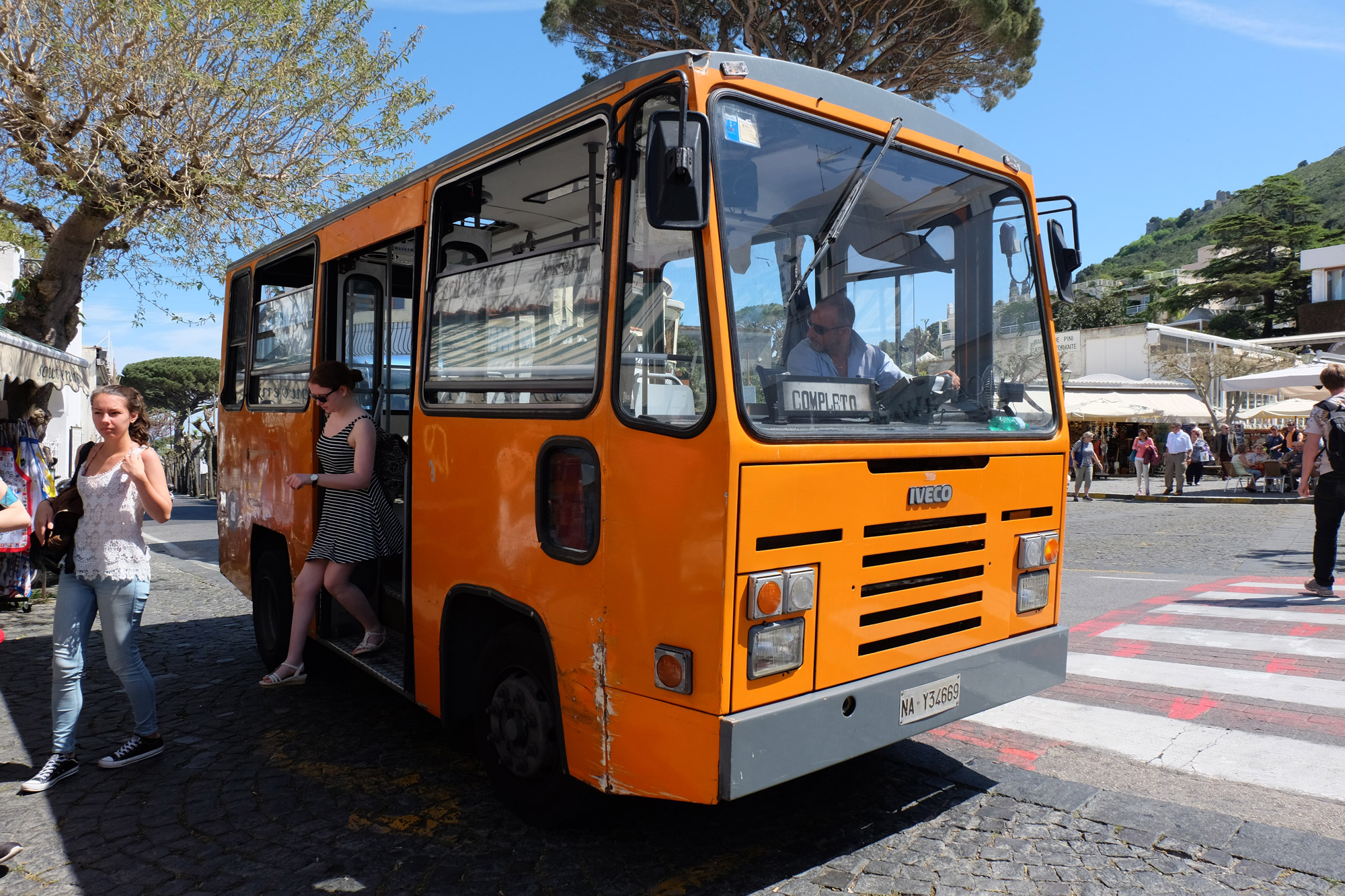
We were in Anacapri to take the chairlift up Monte Solaro, the island’s highest peak. I’d never been on a chairlift before, and I’m unlikely to go skiing so I was very excited. It was a beautifully serene experience swaying gently over gardens, allotments and orchards on our way up the mountain. At the top, the views were just breathtaking and of course impossible to capture in a picture.
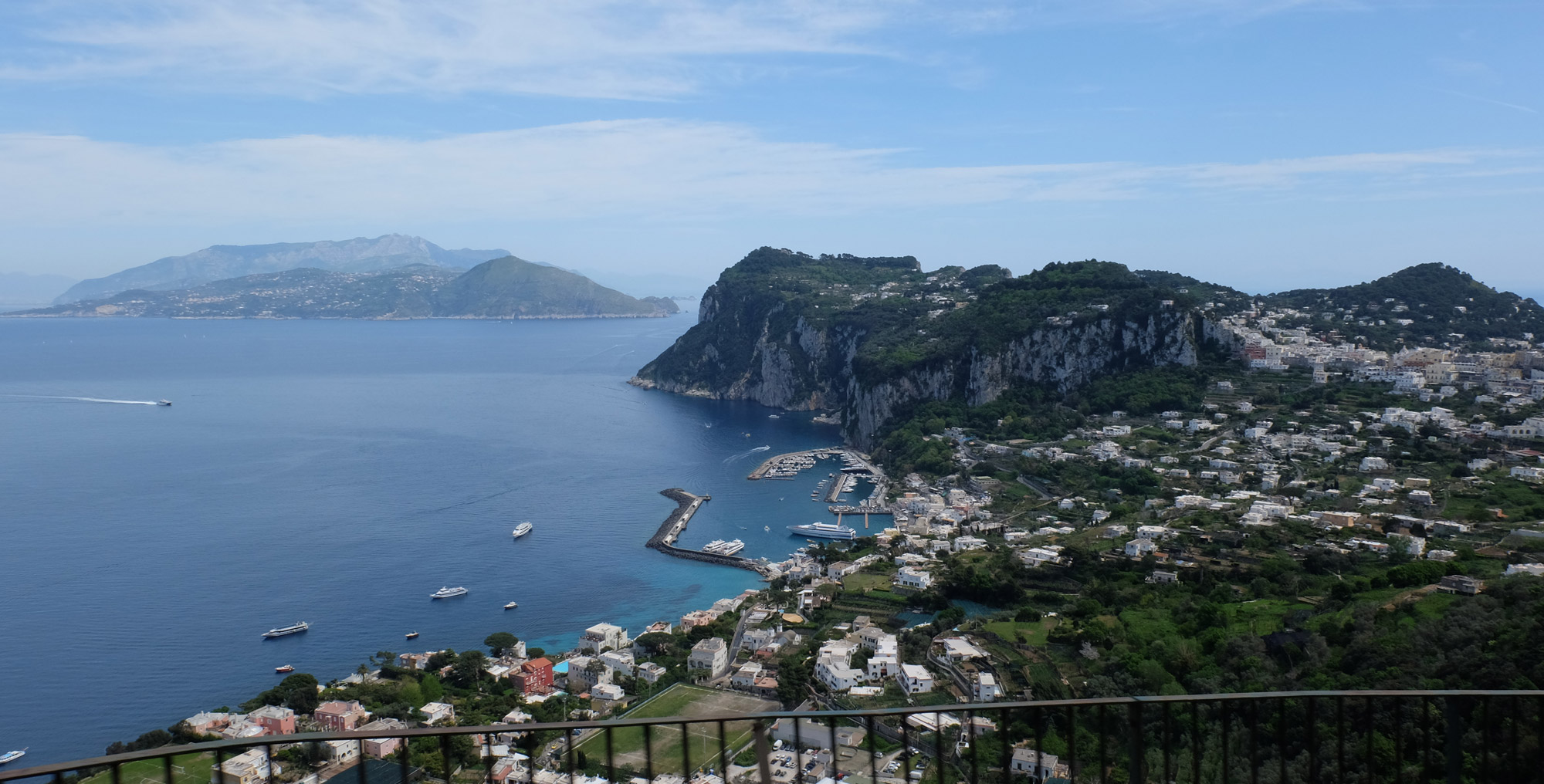
We got the bus back to Capri town and had a look around, but not being rich or famous didn’t feel very welcome. When we left Sorrento that morning we were a bit gutted that we’d had to get an early boat back as the later boats were full, but in the end we were glad to leave. We took the little funicular railway back down to Marina Grande and took the boat back to Sorrento.
Day 7 – Monday: A very early bus from Naples Airport from Sorrento and home.
We stayed at: Grand Hotel Palatino in Rome, Grand Hotel Cesare Augusto in Sorrento
We saw: Roman ruins, a volcano, how the other half live, iconic coastlines
We ate: the best pizza in Sorrento
We drank: water from Roman taps in Pompeii

Hi Helen
Just wanted to say thank you for the tips and guides they have been magical for us and so helpful. Just wanted to say keep up the good work
I’m so glad they were helpful! Thank you very much for your kind words 🙂
Hello, we will be staying in Sorrento, and want to getto both Amalfi and Ravello in one day. I think there is a ferry from Sorrento to Amalfi, but then I’m not sure how to get to Ravello. I’ve read about the buses and they concern me. However, a private driver is expensive, but is it worth getting one for this day trip? Thanks!
Wow you guys got SO much done in a week! We missed Pompeii last time and will definitely have to visit this summer. Great tip about the Circumvesuviana train – that hour-long train ride was probably the least pleasant part of our entire trip around Sorrento/Amalfi Coast.
I totally agree, the Circumvesuviana isn’t exactly the best – there’s the tourist version of the train with air con etc as well but it’s sooo expensive! Definitely try to get to Herculaneum as well, it’s a really interesting contrast to Pompeii.
Love this post. We were there in May and did much the same as you but didn’t get to Capri. I am sure it is beautiful but Versace and star spotting is not my thing. We booked tours, which were pricey. If I went again I would still do the Vesuvius and vineyard tour with lunch, but not the Amalfi Coast one. The local buses would suffice. Like you we used the train to get to Pompeii and Herculaneum and self guided. My top tip for Sorrento is go on the walking food tour.